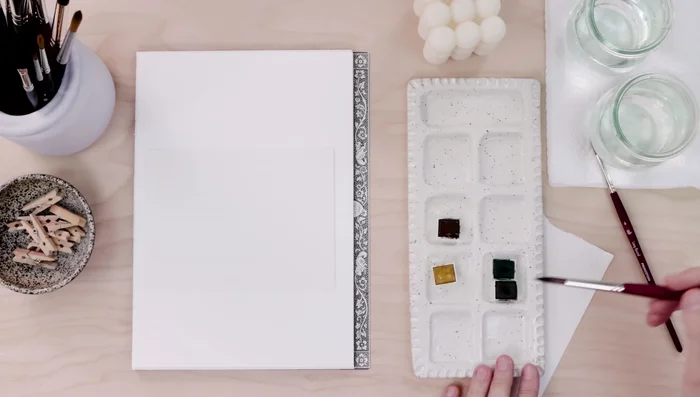Watercolor painting can seem intimidating, but creating beautiful floral cards is surprisingly accessible, even for complete beginners! This tutorial focuses on simple techniques and readily available materials, guiding you through the process of crafting charming watercolor floral designs perfect for any occasion – birthdays, thank you notes, or simply brightening someone's day. Forget complex brushstrokes and frustrating washes; we'll focus on achieving lovely, loose effects that celebrate the natural beauty of flowers.
This easy-to-follow guide will empower you to create stunning watercolor cards without prior experience. We'll break down the process into manageable steps, teaching you everything from choosing the right paints and paper to mastering basic watercolor techniques. Ready to unleash your inner artist and create gorgeous, personalized cards? Let's dive into the step-by-step process!
Preparation and Safety Guidelines
- Blank greeting cards
- Watercolor paper (4x6 size recommended)
- Watercolor paints (yellow ochre, van dyke brown, deep phthalo green, olive brown)
- Clay palette or plate
- Two round brushes (#4 and #8)
- Two glasses of clean water
- Paper towels
- Always work in a well-ventilated area. Watercolor paints and mediums can release fumes.
- Protect your work surface with a waterproof covering like plastic or newspaper. Watercolor can stain.
- Watercolor paints are water-soluble. Allow paintings to dry completely before handling to prevent smudging.
Step-by-Step Instructions
Prepare Paints
- Wet your watercolor cakes to release pigment.
- Transfer wet paint onto your palette.


Prepare Paints Paint Yellow Flowers
- Paint yellow flower petals one at a time, using a few brushstrokes and leaving the paint alone to dry.

Paint Yellow Flowers Paint Flower Centers
- Add brown dots to the center of the flowers to create stamens.

Paint Flower Centers Paint Leaves
- Mix green paint and paint organic leaf shapes, using one or two brushstrokes.

Paint Leaves Create Floral Cluster
- Fill the bottom left corner of the card with yellow flowers, varying sizes and shades.
- Add green leaves around the flowers, varying sizes and placement.
- Add brown dots to create stamens.



Create Floral Cluster Add Details and Fill Space
- Add darker yellow to some petals for detail and fill in any remaining white space with small flowers or shapes.

Add Details and Fill Space Assemble the Card
- Glue the finished watercolor painting onto a blank greeting card.
- Add a message to the card.


Assemble the Card
Read more: Easy Origami Paper Box Tutorial: Step-by-Step Guide
Tips
- Don't overwork your watercolors; let them dry naturally for beautiful variations in color.
- Round brushes are versatile for both large elements and small details.
- Start with light colors and gradually add darker shades.










